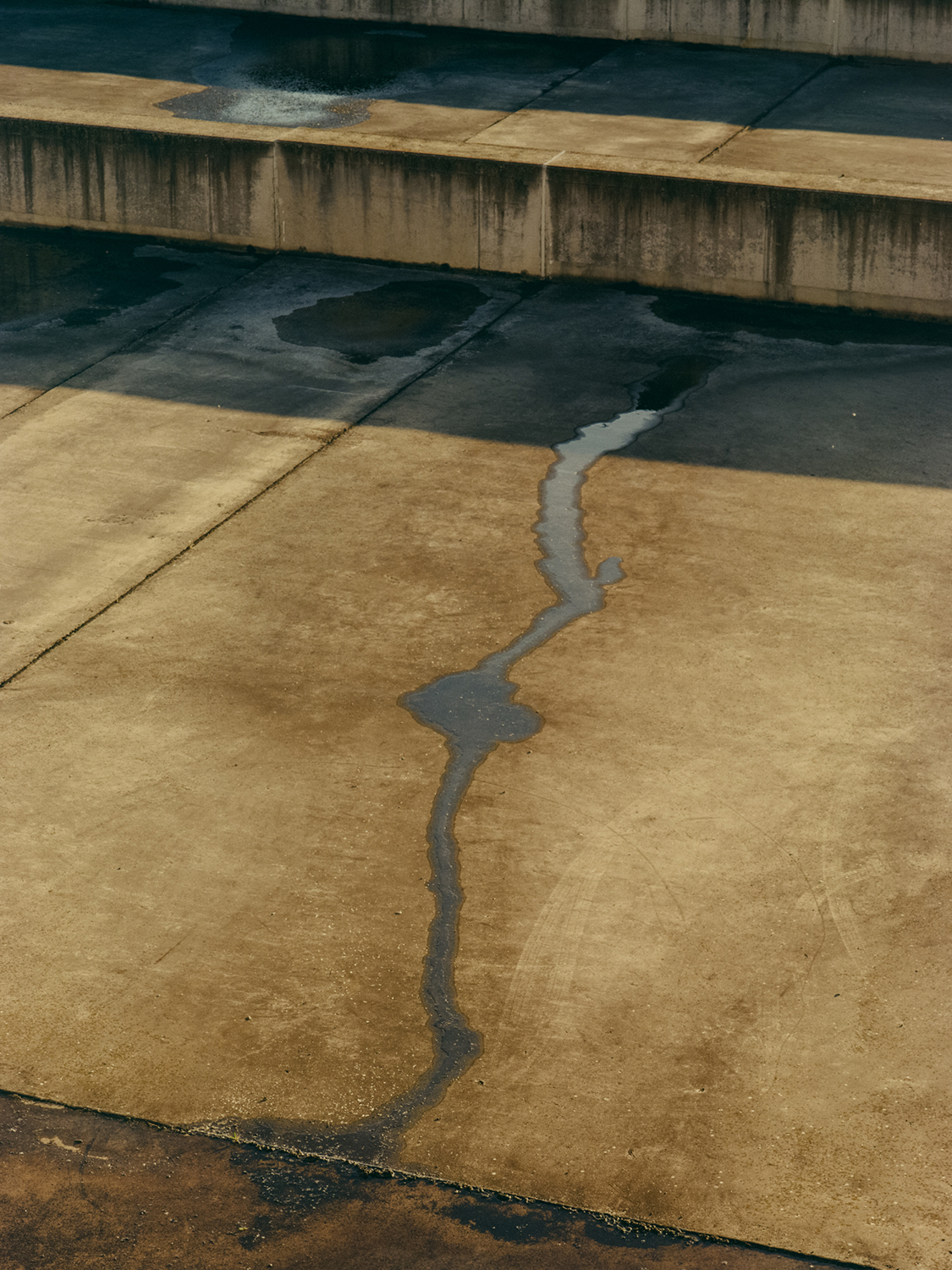Pellicules aveugles (Blind films)
Sixtine de Thé
Nominated by
Centre photographique Rouen Normandie

This project borrows one of cinema's most common codes: the field/counter-field. It seems to me that photography all too rarely bends to this injunction of dialogue, of face to face. In this work, I wanted to confront my own vision with the blindness of my models.
Blind people came to pose for me in my photo studio. They agreed to give me their image. In return, I asked them to create an image on the same medium I was using, large-format photographic film (18x13 cm). Each image became a place of passage, a relay to the sensory limits of the other. The only instruction was: how would you respond to the image I've just taken of you? How do you perceive me? The tools used (Braille punch, roulette wheel, engraving tools, etc.) allowed them to feel the relief of their drawing. I also offered them phosphorescent make-up, warning them that the film would remember any light passed over its surface. So there are shapes and figures drawn directly with light, but also traces of the touch of those who see with their fingers. Some have touched my face, others have preferred to imagine it. Still others drew patterns, abstract or concrete, or even words to counterpoint what they had felt knowing that a lens was pointed at them. By photographing these people and collecting their testimonies of a different vision, I sought a possible point of contact between light and darkness. Photographic film, a fragile but sensual surface with an unparalleled capacity for absorption, seemed to me to be the ideal place. Here, the developed images bear as much witness to a search for presence as they become engraved atlases of a longer time: that of the transition from volume to surface.
‘Pellicules aveugles’ is an installation where photography meets sculpture. Raised on hammered metal pedestals, all the images - mine, taken with a camera, and those engraved by the blind - are intended to be presented in the same way, in the same format, on the same material - photographic film. I felt it necessary to give them a similar status in order to diffract the apprehension of presence: retinal visions and interior glances weave together to create a new kind of rebus. This is where the need for a sculptural installation comes in: to counterbalance the blind spot that this work seeks to portray with a profusion of images presented as sculptures. A forest of moiré images, with metal pedestals forming an organic extension.
The Artist

Sixtine de Thé
Nominated in
2025
By
Centre photographique Rouen Normandie
Lives and Works in
Paris
Sixtine de Thé is a French photographer based in Paris. Her work is expressed as a sensory cartography of the visible and the invisible, where themes such as the body, the face and the territory are prevalent. Often on the verge of disappearance or destruction, her images attempt to answer the question: what remains?
She has exhibited in France, at Private Choice, Galerie Dohyang Lee, Festival Photo Saint-Germain, Fondation Luma (Arles), and abroad (Lebanon, United States). In 2021, her project Pellicules Aveugles won a jury prize at the Prix Dior pour Jeunes Talents. In 2022, she was awarded the Villa Al Qamar, a residency at the Institut Français du Liban, as well as the research and production residency at the Centre Photographique d'Île-de-France for her project Quelque chose qui noire, a photographic installation on darkness in Lebanon, which was also a ‘Coup de cœur’ at the Prix LE BAL/ADAGP in 2023.
Born in France in 1991, Sixtine de Thé lives and works in Paris. She graduated from the Beaux-Arts de Paris in 2021, after studying art history at the École Normale Supérieure and the École du Louvre.
More projects by this artist
No other projects...
Similar projects by everyone else

















































































































